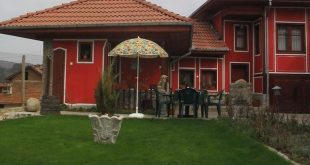Plant pests are a real nuisance and are the biggest nightmare of every gardener – they gnaw leaves, chew the roots and are able to completely destroy vegetable crops. The fight against them with chemicals is a double-edged sword, so more and more gardeners look back in time and learn from old tested methods. Here are some examples and proven time-tested methods:
Bordeaux solution
It is an old and tested preparation to combat mildew in vines, tomatoes and potatoes curl on peach, early and late blight in pome and stone fruit, cercospora in sugar beet, winter spraying in orchards. Quarantine period: 14 days. Mode of action: contact fungicide with protective action – which means it will not heal the sick plants, but will protect them until it is washed away by rain or irrigation water.
Method of preparation
100 liters of solution needed in each case 1 kg per 1% solution and 2 kg for 2% solution of blue vitriol (copper sulfate) and 0.750 kg. quicklime or 1.5-2 kg. slaked lime. Do not use iron containers for preparation! In container, which can accommodate all solution without overflow, pour 90 liters of water and dissolve in it the appropriate amount of blue stone. If the crystals are large slowly. In 10 liters of water dissolve lime – formed “lime milk”. Add it very slowly in a thin stream under constant stirring to the solution of blue stone. Blue stone should be confuse as no lime! Do not make a mistake. The aim is to neutralize the blue stone, rather than using the entire quantity of lime milk. The exact point at which the solution is ready is when it changes color. In the beginning, until gain experience, you can use one sure way – phenolphthalein paper or litmus paper. Add lime milk while redden the first and second turn blue. And done! Use up to 10 hours of preparation then gradually its beneficial qualities deteriorate and eventually disappear!
Usage
At temperatures above 10 degrees, during winter when there is no danger of freezing before the solution has dried. During the growing season of plants, a 1% solution is used and for winter spraying during the rest of fruit trees – 2% with pH 7,5-8,5, which in normal language means slightly alkaline. Behind this there is a very good idea – copper ions are released more slowly and act in autumn and winter when it is very humid and also rains a lot. Only at this pH, it does not wash away easily!
Sulfur-grout
This is a Bulgarian discovery! Act effectively against all fungal diseases that are sensitive to sulfur preparations. Before and after flowering in peach leaf curl, powdery mildew and scab on apple, early and late blight on fruit, sachmyanki fungus, botrytis and powdery mildew on the vine.
Method of preparation
In the iron vessel with a capacity of 200 liters (of which you have marked to where volume is 100 liters) pour 40 liters of water and add 12 kg quicklime or 24-30 kg of lime. Make a small fire below it and heat the “lime milk”. To this, add 24 kg sulfur powder (pure!) And stir until well mixed. If you do not warm well, it will be very hard for you to mix it! Then top up with 40-50 liters of more water. This water must evaporate when cooking on low heat for about 40-60 minutes. When the water level reaches 100 liters (up to the mark) and the color of the solution is like a very expensive cognac, it means it is ready! Allow it to cool down and settle for 24 hours. Then carefully Pour or scoop the clear liquid with reddish-brown color. Pour into healthy dishes – plastic, glass, iron – as you wish and lock them tightly. You keep it long enough, not to freeze. In practice, it never gets spoiled.
Usage
At temperatures above 10 degrees, but not when it is very hot!
Winter spraying of pome fruit trees – dilute 1:6
Summer splash of pome fruit trees – dilute 1:40-50
Winter spraying of stone fruit trees – diluted 1:10
Summer splash of stone fruit trees – dilute 1:60-1:100
Colloidal sulfur
It is safe for plants and used for spraying during their vegetation.
Method of preparation
In container with 90 liters of water, add 1 liter of sulfur-mortar. In container with 10 liters of water dissolve 50-60 grams green stone (ferrous sulfate). Add a thin stream of the green stone solution to the already dissolved in 90 liters of water sulfur-grout. The liquid turns black and it is very easily precipitated! Use it emmidiately! It doesn’t last so it can’t be stored!
What do we do with weeds?
Actually weeds are flanking plants. They are not accidentally created in nature and they matter. There are experiments proving that when certain weeds are planted, the crops develop better. This is done so the plants growing in organic farm can have a good immune system and defend themselves against pests and diseases. A weed, if you are working and comply with all requirements rarely harm. Only if in certain section they begin to dominate and inhibit the growth of other plants, they need to be properly removed manually at specified time. But most of them before placing seeds, serve as part of the compost pile. In the compost pile, any biological waste is used. The fight with pestsis only necessary, when we make mistakes. We must always work for advance protection and prevention of plants.
Another method that is particularly useful is so-called mixed cultivation. There are studies that show that the mixed crops plants protect each other. A very typical example is the inculcation of onions and carrots together. Onions have emissions that help against pests of carrots and back – carrots help the onion. There are tables showing the best combinations. As you live with several neighbors and you get along with some of them, but with others you don’t, the same applies to plants. The grouping of certain vegetables and flowers of other plants helps the natural repulsion of the pests and, moreover, you will achieve garden diversity. An effective example of this is the combination of planting marigold eggplant and asparagus or broccoli, which banishes worms and other insects.
 Happy at Home Family Problems & Solutions | Home & Health Tips
Happy at Home Family Problems & Solutions | Home & Health Tips




